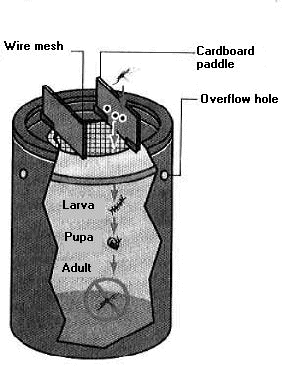
Problem being addressed
There is a need for an economical and environmentally-friendly method of trapping and collecting mosquitoes. It may be applicable for controlling Anopheles mosquitoes, which are the primary carriers of malaria.
Detailed description of the solution
The Ovitrap consists of a black cylinder with a piece of cardboard. It does not require electricity and is based on physical/chemical stimuli. Female mosquitos lay eggs in the black ovitrap, and when the larvae hatch and develop into adults, they cannot fly out of the device and they die inside the trap.
Designed by
- Design: It was designed by Evans & Bevier, then modified by K.L. Chan.
- Manufacturing: The Ovitrap may be made locally according to the region of implementation.
When and where it was tested/implemented
This device was used in two cities in Malaysia, in Kuala Lumpur and Selangor. It was also used in the state of Texas in the United States and in Singapore.
References
Peer-reviewed publication
Cheng, M., & Ho, B. (1982). Role of a modified ovitrap in the control of Aedes aegypti in Houston, Texas, USA. Bulletin of the World Health Organization. Link available here.
Perich, M., Kardec, A., Braga, I., Portal, I., Burge, R., Zeichner, B., Brogdon, W., et al. (2003). Field evaluation of a lethal ovitrap against dengue vectors in Brazil. Medical and Veterinary Entomology, 17(2), 205–210. Wiley Online Library. Link available here.
Tan Ai-leen, G., & Song, R. J. (2000). The Use of GIS in Ovitrap Monitoring for Dengue Control in Singapore+. Dengue Bulletin. Link available here.
Zeichner, B., & Perich, M. (1999). Laboratory testing of a lethal ovitrap for Aedes aegypti. Medical and Veterinary Entomology, 13(3), 234–238. Wiley Online Library. Link available here.
IP and copyright
U.S. patent. # 7,434,351, October 14, 2008